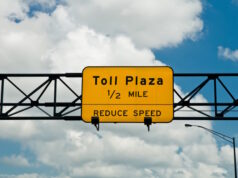
National Merry-Go-Round Day on July 25 recognizes the joy, laughter and carnival music often associated with these fun rides.
The merry-go-round (also known as a carousel) is an amusement ride consisting of a rotating circular platform with seats for riders. Between rows of seats, riders mount wooden horses and other animals mounted on poles. Adding interest, many of the animals move up and down to simulate galloping, and calliope music plays adding a light-hearted atmosphere.
- The earliest known depiction of the merry-go-round is in 500 A.D. in the Byzantine Empire, which depicts baskets, carrying riders, suspended from a central pole.
- In the 1840s, Franz Wiesenoffer created the first merry-go-round in the United States in Hessville, Ohio.
- July 25, 1871 – The first carousel patent. The date commemorates the first U.S. patent issued to William Schneider of Davenport, Iowa for the modern carousel.
- Some carousel advertisements in early nineteenth century America stated that the ride was highly recommended by physicians as an aid in circulating the blood.
- Reputedly, one of the C.W. Parker Company’s most notable former employees was Dwight D. Eisenhower, Supreme Allied Commander of D-Day in World War II and later U.S. President, who, as a young lad, was said to have sanded carousel horses at the Parker factory located near his home in Abilene, Kansas.
- Between 2,000 and 3,000 carousels were produced in the U.S. during its golden age of wooden carousels (early 1880’s to early 1930’s); today, there are less than 150 still left operating.
- There are less than ten carousels with operating brass ring machines left in the U.S.
- The earliest known use of the term merry-go-round is found in a poem written by Englishman George Alexander Stevens in 1729.
- To relax before taking off on what became the first successful solo nonstop trans-Atlantic flight in 1927, American aviator Charles Lindbergh ventured down to Coney Island to ride the carousel.
- In the early 1940’s, Prime Minister Winston Churchill ordered that Britain’s carousels be reopened, despite widespread material shortages, in an effort to boost morale during World War II.
- The original entrance sign to the shop of one of America’s earliest carousel pioneers, Gustav Dentzel, is on display at the Merry-Go-Round Museum in Sandusky, Ohio, USA, and dates from around 1867.
- Measuring 80 feet wide, weighing 35 tons, and containing 269 hand-crafted animals, the carousel at The House on the Rock in Spring Green, Wisconsin, USA, is the world’s largest.
- Located in Chattanooga, Tennessee, Horsin’ Around is one of America’s few carousel figure carving schools.
- America’s earliest known carousel seems to have appeared in 1799 in Salem, Massachusetts, and was advertised as a wooden horse circus ride.
- The first carousel at Coney Island, New York, was built in 1876 by Charles I. D. Looff, a Danish woodcarver.
- The oldest functional carousel in Europe is in Prague (Letna Park).
- The oldest operating carousel in the U.S. is in Watch Hill, Rhode Island, built in 1893. This is a “flying horses” machine (animal figures are suspended from a central pole and fly out from the centrifugal force of the spinning mechanism).
The Merry-Go-Round Museum was featured in season two of Scenic Stops, an original program on WBGU-TV in Bowling Green, Ohio. The museum is located in Sandusky, Ohio and was established in 1990 and set in a former Post Office building. The Merry-Go-Round Museum is dedicated to the preservation, promotion and protection of carousels and their art and history. WBGU-TV would like to thank Veronica Vanden Bout, Kurri Lewis and the Merry-Go-Round Museum for letting us explore your scenic stop!
Sources:












